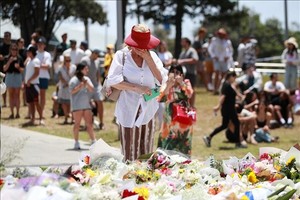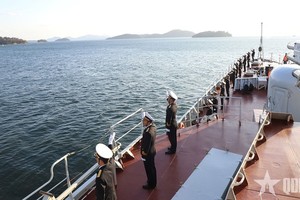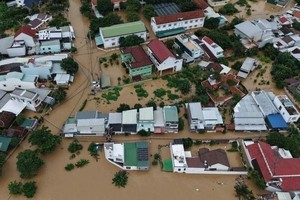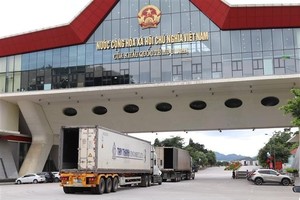A powerful typhoon bearing down on disaster-ravaged Japan has killed at least four people, authorities said Wednesday, less than a month after a vicious storm left 100 dead.
More than a million people were initially warned to leave their homes over fears that the torrential rains Typhoon Roke is expected to bring will cause widespread flooding.
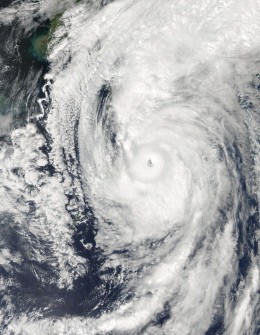
The typhoon comes just months after a devastating earthquake and tsunami sparked a crisis at the Fukushima nuclear plant.
Four people have been found dead in central and western Japan, while two people are missing in the central prefecture of Gifu, including a young boy who disappeared on his way home from primary school.
Many evacuation advisories were dropped by Wednesday lunchtime, but remained in force for around 330,000 people nationwide.
It was not clear how many had followed the advice, which falls short of mandatory evacuation orders.
Auto giant Toyota said it was temporarily shutting 11 of its 15 Japanese plants, which lie in the path of the approaching storm.
"The second (afternoon) shift is stopped. (It is) not resuming today. No decision has been made for tomorrow," company spokesman Dion Corbert told AFP.
The affected plants are all in Aichi prefecture in central Japan.
Roke is expected to heap more misery on a country that has suffered badly at the hands of nature this year.
The huge quake and tsunami of March 11 left 20,000 people dead or missing and devastated hundreds of kilometres (miles) of coastline, destroying whole communities and wreaking billions of dollars of damage.
The Fukushima Daiichi nuclear power plant was sent into meltdown after its cooling systems were swamped by the waves, sending radiation into the air, sea and food chain in the planet's worst atomic disaster since Chernobyl.
Earlier this month Typhoon Talas slammed into central Japan, killing around 100 people in the deadliest storm to hit the country for over 30 years.
Heavy downpours caused flash flooding and massive landslides that swept away buildings and people.
By lunchtime on Wednesday, Typhoon Roke was 120 kilometres (75 miles) southwest of Hamamatsu in Shizuoka prefecture, packing winds of up to 162 kilometres per hour near its centre. It was moving at around 35 kilometres per hour.
It was expected to make landfall in the afternoon before moving northeast, possibly towards the crippled Fukushima nuclear plant, where workers are still battling to control persistent radiation leaks.
"The typhoon will move north at high speed," a Japan Meteorological Agency official told a news conference, warning of damage and impact on transport systems.
The typhoon has already brought torrential rain and some flooding, with TV footage showing residents walking through streets knee-deep in water.
A number of expressways have been closed, while more than 200 flights are to be cancelled for Wednesday, according to NHK.
Media reports said a 66-year-old man in Nagoya fell to his death while unblocking a drainpipe and a 71-year-old man in Karatsu city in southern Japan drowned in high ocean waves while trying to moor a fishing boat.
